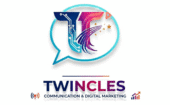In the crowded world of digital marketing, grabbing attention is just the beginning of the journey.
The real challenge lies in forging meaningful connections that inspire trust, loyalty, and action. That’s where storytelling steps in. Far beyond a buzzword, storytelling has become the backbone of successful digital campaigns—transforming data into emotion, brands into personalities, and products into experiences.
What is Storytelling in Marketing?
At its core, storytelling in digital marketing is the use of narrative techniques to communicate a message, promote a brand, or influence consumer behavior. It’s about crafting a coherent, engaging story that aligns with the brand’s values and resonates with the audience on a personal level.
Unlike straightforward advertising, which often focuses on product features and benefits, storytelling is about creating an emotional arc. It involves characters, conflict, resolution, and most importantly—a clear takeaway or moral that aligns with your brand’s purpose.
Why Storytelling Works
Humans are hardwired for stories. Long before the written word, we used storytelling as a tool to teach, entertain, and pass down wisdom. Neurological research shows that stories stimulate parts of the brain associated with memory, empathy, and imagination. When people hear a story, they don’t just process it—they feel it.
When brands tell compelling stories, they do more than attract attention—they build emotional bonds that drive results. Research by Headstream shows that 55% of consumers are more likely to buy from a brand they connect with through storytelling, 44% will pass the story along, and 15% make an immediate purchase.
Elements of Effective Storytelling in Digital Campaigns
To truly connect with audiences, marketers need to weave in the fundamental components that make stories powerful and memorable.
1. A Relatable Protagonist
Your audience should see themselves in your story. This means the hero of your campaign—whether it’s a customer, employee, or even the brand itself—must mirror the values, challenges, or aspirations of your target audience.
2. Conflict or Challenge
Great stories involve a problem to be solved. In digital campaigns, this might be a common frustration (e.g., a busy mom struggling to find time to cook) or a broader societal issue (e.g., environmental sustainability). The conflict creates tension, which holds attention and drives engagement.
3. Resolution
This is where your product or service enters the scene—not as a hard sell, but as part of the solution. The resolution should feel organic and satisfying, offering not just functional value but emotional payoff.
4. Authenticity
Modern consumers—particularly Millennials and Gen Z—can quickly detect when a brand lacks authenticity. Authenticity is essential. That means using real customer testimonials, behind-the-scenes content, and consistent brand voice to create a believable and trustworthy narrative.
5. Emotion
Emotion is the connective thread that transforms storytelling into a powerful experience. From joy and hope to nostalgia and empathy, emotional depth is what converts casual audiences into committed brand champions.
How Storytelling Powers Digital Campaigns
1. Increases Engagement
Scroll-stopping content is rare—but a good story makes people pause. Whether it’s a video ad, social media post, or long-form blog, storytelling adds depth and personality that standard promotional content often lacks. Engagement metrics like shares, comments, and watch time improve significantly when the content tells a compelling story.
2. Boosts Brand Affinity
Brands that tell stories become more than logos—they become entities with values, missions, and personalities. This emotional branding is essential in building long-term relationships. Think of brands like Apple, Nike, or Dove.
Their success isn’t just about innovation or quality—it’s about the stories they consistently tell.
3. Enhances Memorability
People forget facts but remember stories. When a campaign is structured as a story, it sticks. When a brand message is woven into a compelling story, it becomes more memorable and more likely to be shared.
4. Drives Conversions
While storytelling is often seen as a top-of-funnel strategy, its impact on conversions shouldn’t be underestimated. An effective story leads customers seamlessly through each stage of the buyer’s journey—from initial awareness to final decision. By aligning the brand as a guide or solution within the story, marketers can naturally lead users to take action.
Real-World Examples of Storytelling in Digital Campaigns
Nike – “You Can’t Stop Us”
Nike’s campaign during the pandemic wasn’t just a montage of athletes—it was a story of resilience, unity, and hope. It showed athletes from different backgrounds facing adversity but pushing forward. The story struck a global chord, reinforcing Nike’s central themes of perseverance and self-belief.
Airbnb – “Belong Anywhere”
Instead of highlighting property listings, Airbnb shares stories of real travelers and hosts. These stories create emotional connections, humanize the brand, and highlight the unique experiences that define their service.
Always – “#LikeAGirl”
This campaign challenged stereotypes and reframed what it means to do things “like a girl.” Through a powerful narrative structure, it didn’t just advertise a product—it sparked a movement. The result? Widespread engagement and a meaningful transformation in how the brand was viewed.
Storytelling Across Digital Channels
Each digital platform offers unique opportunities for storytelling:
* Social Media: Ideal for micro-stories and episodic content. Instagram Stories, LinkedIn posts, and TikTok videos allow for quick, impactful storytelling moments.
* Email Campaigns: Perfect for serialized storytelling. Brands can use newsletters to build ongoing narratives that engage and convert.
* Websites and Blogs: Offer space for long-form storytelling that builds authority and emotional depth.
* Video Marketing: Arguably the most powerful storytelling medium, combining visuals, sound, and narrative to immerse the viewer.
* Influencer Marketing: Leverages authentic voices to tell real stories from a first-person perspective, increasing trust and relatability.
